Expert's Rating
Pros
- Premium materials
- Comes with the Orotfon Blue cartridge
- Electronic speed control eliminates need for manual belt adjustments
Cons
- Fully manual operation means there’s no shutoff when a record finishes a side
Our Verdict
U-Turn takes its excellent turntable design skills, upgrades the materials and electronics, and builds a record player that can stand with the best in this price range.
U-Turn Audio has earned a sterling reputation as a manufacturer of outstanding entry-level turntables. The company’s all-new Orbit Theory model doubles the price of its previous flagship, but the listening experience this new model fully delivers justifies its price tag.
U-Turn manufactures its turntables at their facility in Woburn, MA and most of their parts are sourced in the USA. Aside from selling a single pair of powered speakers, U-Turn has stuck to the vinyl business, selling well-regarded turntables that start at $199, phono preamps, and a handful of curated reissue LPs on their website.
What separates the Orbit Theory from lesser turntables is the tactile pleasure you’ll get from using it.
The Orbit Theory takes U-Turn’s basic design approach and upgrades all the materials and components to make a turntable that improves a quality line in every way. The basic model sells for $999 and comes with the $239 Ortofon 2M Blue moving magnet cartridge. Buyers can upgrade to the $499 Ortofon 2M Bronze and the cost rises to $1,179.
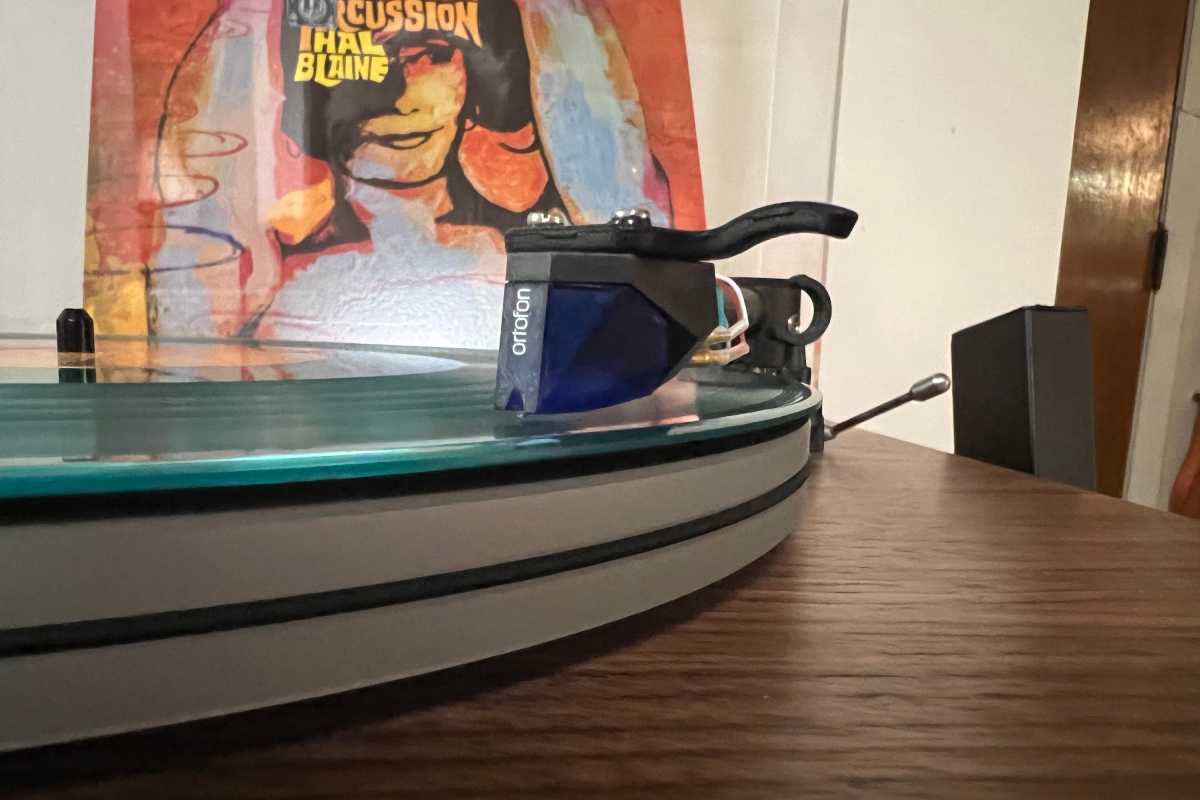
The U-Turn Audio Orbit Theory turntable ships with an Ortofon 2M Blue moving magnet cartridge (pictured). Buyers can upgrade to an Ortofon 2M Bronze cartridge.
James Barber/Foundry
The turntable is also available with a built-in U-Turn Pluto 2 phono preamp, which sells for $99 as a freestanding unit. The Orbit Theory with preamp and Ortofon 2M Blue sells for $1,069, while the preamp and Ortofon 2M Bronze model goes for $1,249. Our test unit came with the Ortofon 2M Blue cartridge and the Pluto 2 phono preamp.
This review is part of TechHive’s in-depth coverage of the best turntables.
Is the U-Turn Orbit Theory turntable well-built?
U-Turn didn’t cut corners on materials when building the Orbit Theory. The plinth is manufactured from a solid piece of walnut or oak, which is ebonized for the black version. There’s no veneer-covered chipboard here. An easy-to-install clear plastic dust cover is included.
The frosted acrylic platter has a groove machined around its edge to hold the belt in place. That belt is crafted from a seamless piece of silicone. A black felt mat obscures the cool-looking platter, so you might consider storing it when the turntable isn’t otherwise in use.
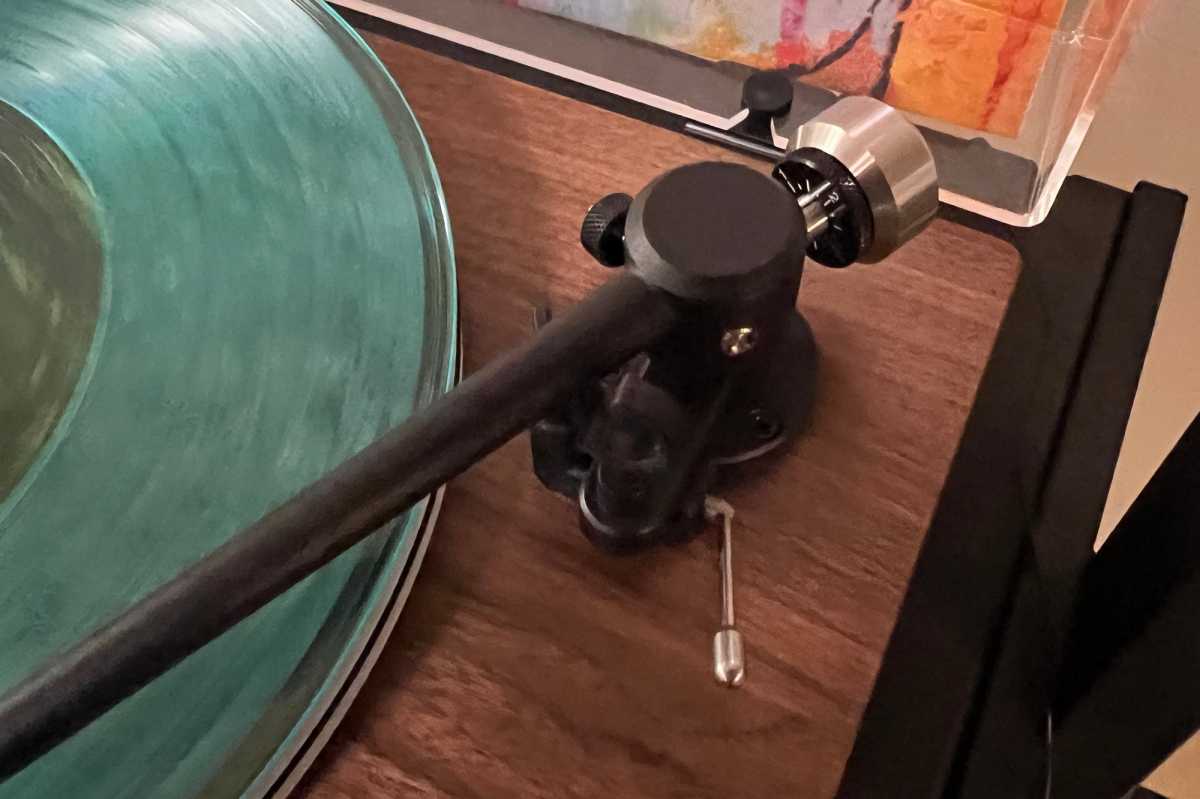
The U-Turn Orbit Theory counterweight clicks into place to let you know it’s in the right position to balance the tonearm.
James Barber/Foundry
The tonearm is fabricated from magnesium, which is 33 percent lighter than the aluminum that U-Turn uses in its other models. A lighter tonearm means less tracking force, which means less wear-and-tear on your vinyl. The turntable also comes with a spirit level, a tool that comes into play because the user can adjust the height of the aluminum feet with Sorbothane cushions to absorb vibrations.
Setting it up the U-turn Orbit Theory turntable
U-turn keeps setup as simple as possible for a high-end turntable, and the included guide comes with clearly written directions and plenty of pictures. Drop the platter onto the spindle before threading the belt around the platter and pulley. The next step is to place the included bubble level onto the plinth to check whether the feet need adjustment. Once the bubble is centered in the level, you can move on to the tonearm.
Slide the counterweight onto the back of the tonearm until you hear a click. It’s that initial click of the counterweight that separates the Orbit Theory setup from more intimidating turntables. A user gets definite physical feedback that assures them they’re on the right track, and the balancing act in the next step seems far less intimidating with that relatively small bit of tactile feedback.
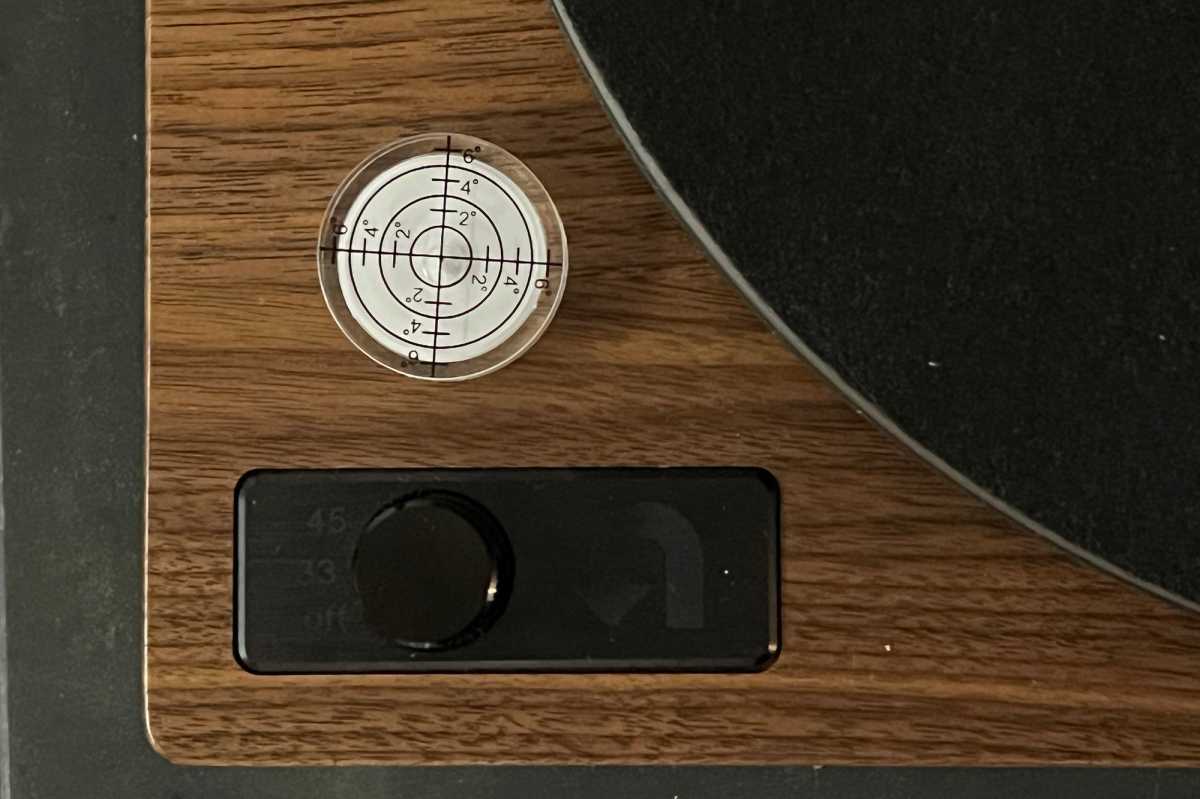
The U-Turn Orbit Theory turntable has adjustable feet and an included bubble level to let you know when your turntable is balanced.
James Barber/Foundry
Next, make sure the anti-skate lever is in the off position, remove the stylus cover and float the tonearm over the platter. Rotate the counterweight backwards until the tonearm is perfectly balanced and return it to the rest. Then calibrate the counterweight dial to zero before setting the tracking force to 1.75 grams for the Ortofon 2M cartridge. Click the anti-skate weight back to the on position and you’re ready to go.
The final step is to connect RCA cables to the Pluto 2 phono preamp built into the back of the Orbit Theory. Turn the preamp off if you’re using your own or a receiver with a built-in phono stage.
Listening to the U-Turn Orbit Theory
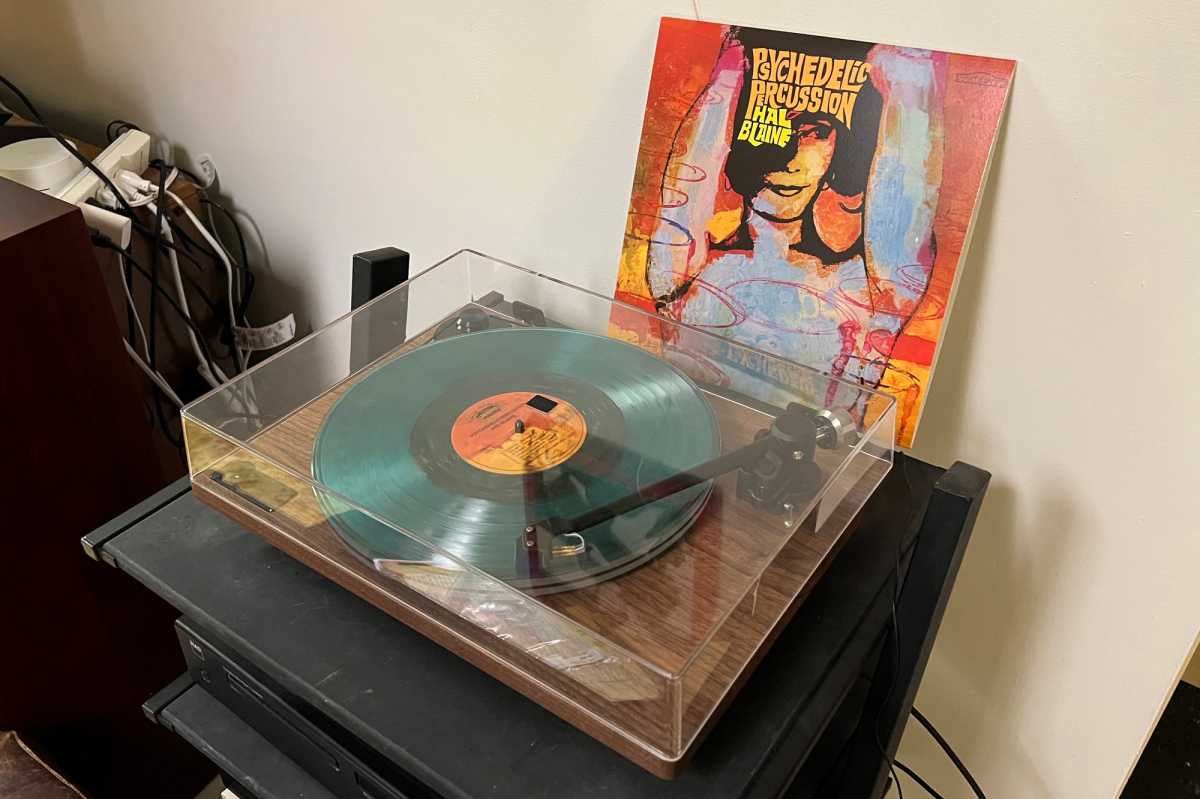
The U-Turn Orbit Theory did a great job of reproducing the intricate arrangements on Hal Blaine’s Psychedelic Percussion LP.
James Barber/Foundry
I did most of my listening with the phono preamp turned on. The Record Store Day 2023 reissue of Hal Blaine’s 1967 album Psychedelic Percussion was an excellent test option because the legendary Wrecking Crew session drummer used virtually every percussion instrument in his arsenal to create a trippy jazz album that claims to be the second-ever LP to feature a Moog synthesizer.
There’s a lot going on in these tracks, and Blaine was crafting a stereo listening experience instead of a Phil Spector-style Wall of Sound. The album’s not quite a classic because it’s a bit light in the songwriting department, but there’s an endless array of innovative percussion experiments. Imagine the world’s great session drummer getting to put down every weird idea that popped into his head and you’ll get the idea.
The new pressing is excellent, conveying much more detail than I’ve heard on any of the (relatively thrashed) thrift store copies of Psychedelic Percussion I’ve owned before. The Orbit Theory/Ortofon 2M Blue combination delivered more enjoyable clarity than when I compared it with a $250 Fluance RT81 turntable with an Audio-Technica AT95E cartridge.
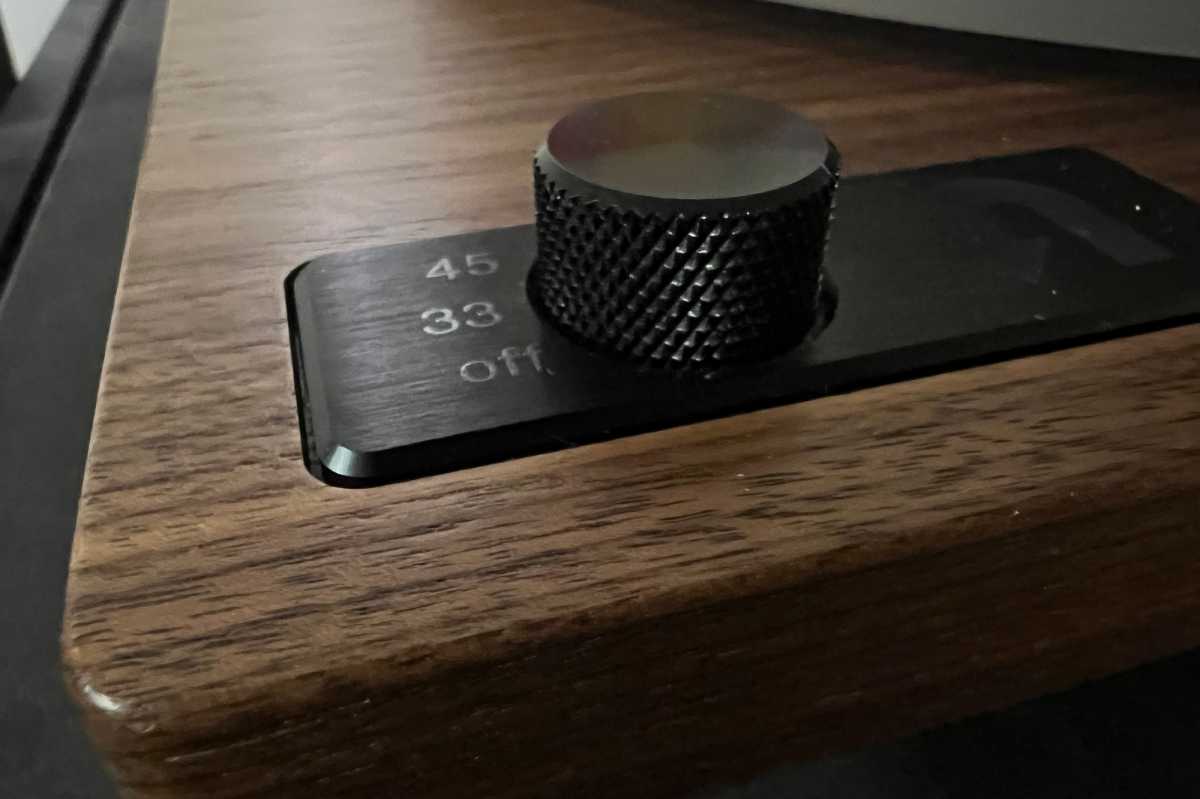
The U-Turn Orbit Theory turntable has electronic speed control, so users can switch between 33rpm and 45rpm without adjusting the belt.
James Barber/Foundry
Should you buy the Phono Preamp version of the Orbit Theory?
The included Pluto 2 preamp sells for $99 if you buy one as a separate unit, and I compared it to the NAD PP4 phono preamp, which sells for $279 but adds a USB output and support for moving coil cartridges. I also used the Orbit Theory with the $499 Pro-Ject Phono Box DS2 USB.
The Pluto 2 didn’t deliver quite as much detail as the Pro-Ject unit, but it compares favorably to the NAD PP4. Since adding the preamp is a $70 upgrade, users who don’t already own a phono preamp will appreciate both the sound and the ease of use the Pluto 2 brings to the table.
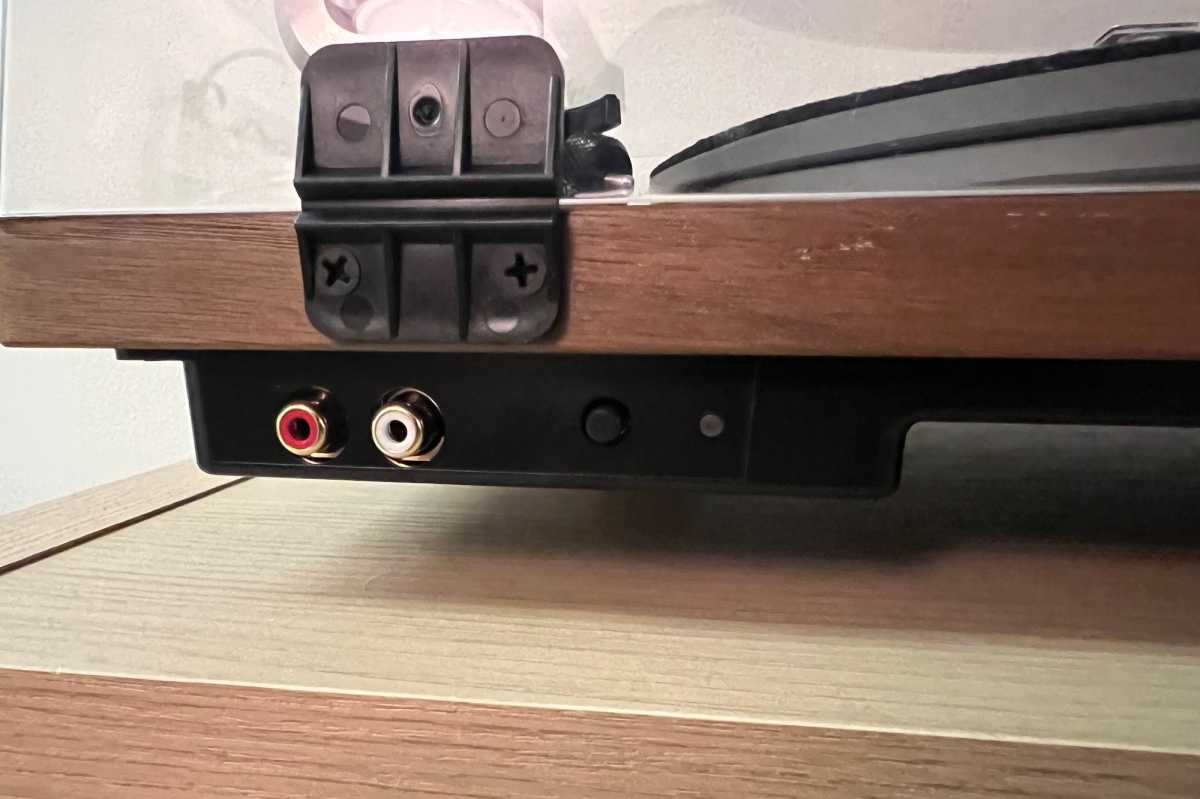
Buyers who choose the U-Turn Orbit Theory model with the built-in Pluto 2 phono preamp will find a bypass button to the right of the RCA jacks on the rear of the turntable.
James Barber/Foundry
Should you buy the U-Turn Orbit Theory Turntable?
In a world where an unfathomable amount of recorded music is available on demand via the phone in your pocket, the elaborate steps that go into playing a vinyl record have taken on the air of sacred rites or rituals. In an era when the idea that our actions can be intentional has come to represent an elevated spiritual plane, spinning a record has become an act of communion.
Here’s the thing about the Orbit Theory. When U-Turn made all those decisions about design and which materials to use, they were building a turntable that is a true pleasure to use. If you’ve only got $250 to spend and don’t mind plastic and wood veneer, U-Turn’s own Orbit Basic, the Fluance RT81 I mentioned earlier, or the Monolith 60046 turntables are all excellent options.
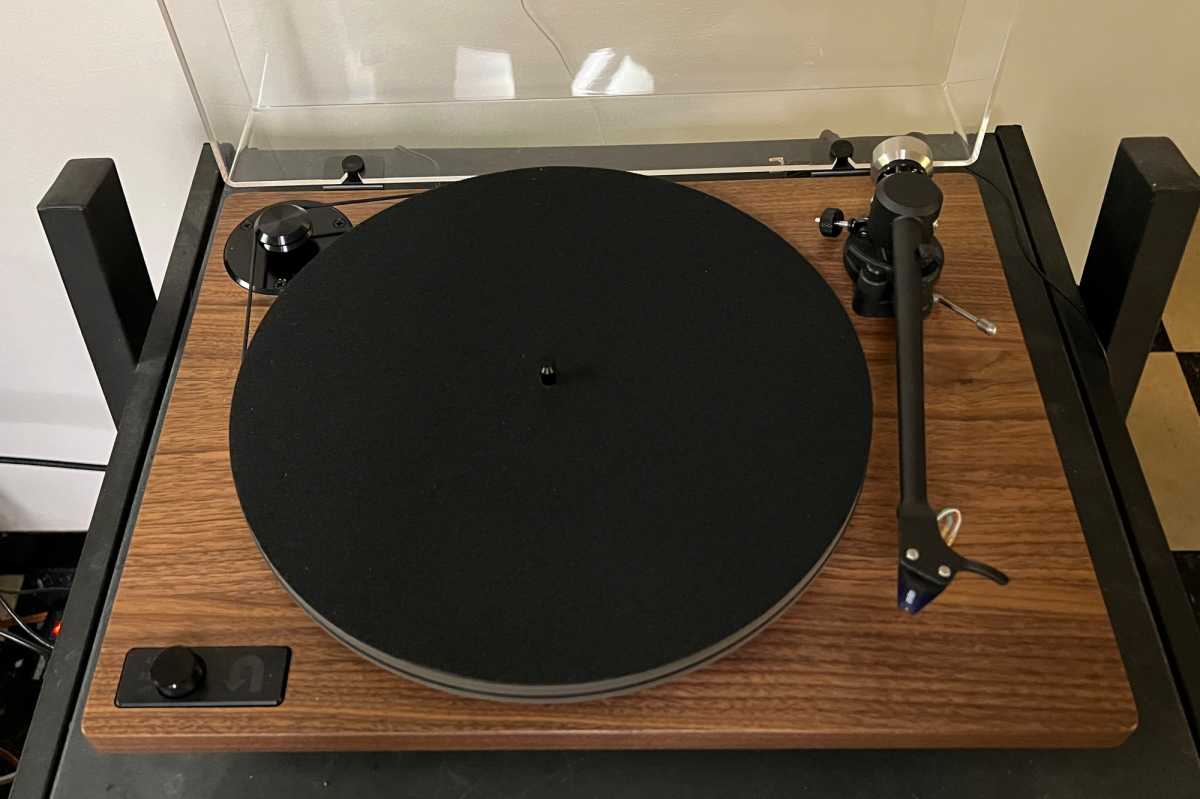
The U-Turn Orbit Theory turntable comes with a black felt mat to protect your vinyl.
James Barber/Foundry
You’ll get a superior moving magnet cartridge with the Orbit Theory, but you can upgrade the cartridge in most quality entry-level turntables. What separates the Orbit Theory is the tactile pleasure you’ll get from using it.
Its being 100 percent manual means you’ll need to get up (or stop dancing) to lift the tonearm every time a side ends. But every time you lift the tonearm, you’ll be reminded that the materials used to build this turntable are simply more beautiful than what you’re getting with those less-expensive models.
The smooth action of the tonearm lever, the responsiveness of the speed control, and the feel of the wood plinth make the tactile experience of using the Orbit Theory somehow more elevated than what you’ll get from a its veneered competition. The U-Turn Orbit Theory is a truly premium product that doesn’t require users to dive into the deep and murky waters of audiophile vinyl culture. If you prefer your LP listening to come with a side of complicated setup, there are plenty of great turntable options that can cost you tens of thousands of dollars. For the rest of us, U-Turn has delivered an ideal turntable.


